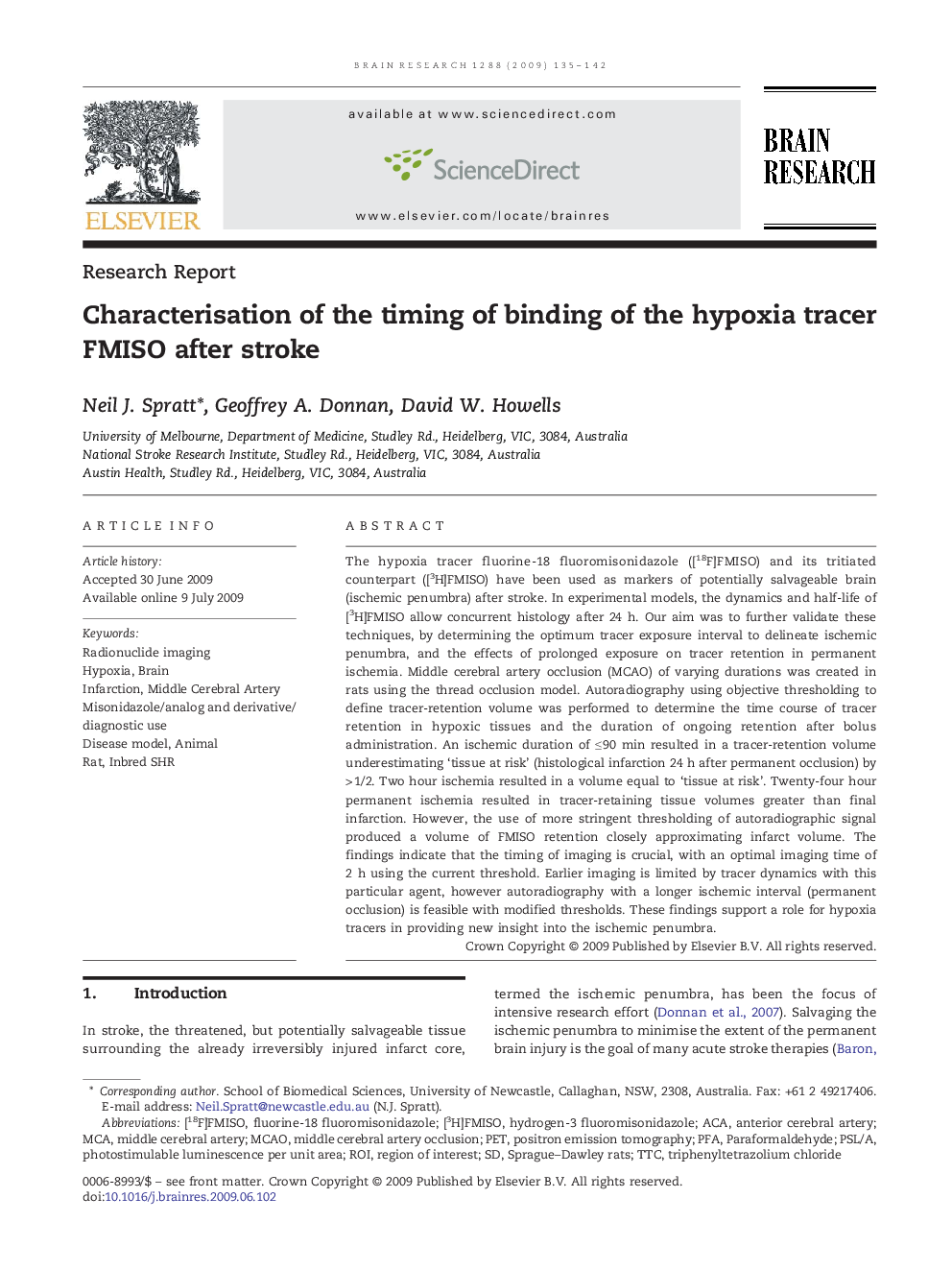| کد مقاله | کد نشریه | سال انتشار | مقاله انگلیسی | نسخه تمام متن |
|---|---|---|---|---|
| 4328020 | 1614151 | 2009 | 8 صفحه PDF | دانلود رایگان |

The hypoxia tracer fluorine-18 fluoromisonidazole ([18F]FMISO) and its tritiated counterpart ([3H]FMISO) have been used as markers of potentially salvageable brain (ischemic penumbra) after stroke. In experimental models, the dynamics and half-life of [3H]FMISO allow concurrent histology after 24 h. Our aim was to further validate these techniques, by determining the optimum tracer exposure interval to delineate ischemic penumbra, and the effects of prolonged exposure on tracer retention in permanent ischemia. Middle cerebral artery occlusion (MCAO) of varying durations was created in rats using the thread occlusion model. Autoradiography using objective thresholding to define tracer-retention volume was performed to determine the time course of tracer retention in hypoxic tissues and the duration of ongoing retention after bolus administration. An ischemic duration of ≤ 90 min resulted in a tracer-retention volume underestimating ‘tissue at risk’ (histological infarction 24 h after permanent occlusion) by > 1/2. Two hour ischemia resulted in a volume equal to ‘tissue at risk’. Twenty-four hour permanent ischemia resulted in tracer-retaining tissue volumes greater than final infarction. However, the use of more stringent thresholding of autoradiographic signal produced a volume of FMISO retention closely approximating infarct volume. The findings indicate that the timing of imaging is crucial, with an optimal imaging time of 2 h using the current threshold. Earlier imaging is limited by tracer dynamics with this particular agent, however autoradiography with a longer ischemic interval (permanent occlusion) is feasible with modified thresholds. These findings support a role for hypoxia tracers in providing new insight into the ischemic penumbra.
Journal: Brain Research - Volume 1288, 8 September 2009, Pages 135–142